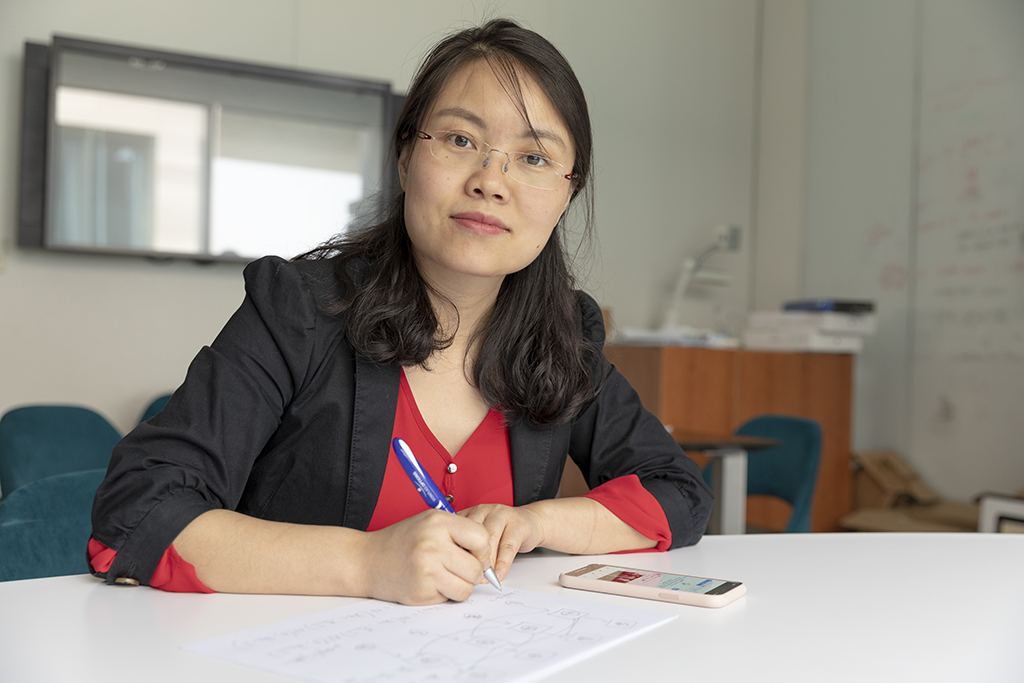Flattening the sentimental curve

KAUST Associate Professor Xiangliang Zhang talks about her research in the use of machine learning to monitor pandemic response and predict localized outbreaks.
-By Meres J. Weche, KAUST News
As municipal, regional and national governments have mandated longer and more restrictive isolation time periods to slow down the spread of the COVID-19 pandemic and "flatten the curve," KAUST Associate Professor of Computer Science Xiangliang Zhang works on flattening the "emotional curve."
Zhang's research focuses on developing reliable algorithms to analyze complex data sets through machine learning and artificial intelligence. Her research group specifically uses computer models to analyze social media posts on Twitter to study people's interests.
When the coronavirus outbreak started, she planned to launch a new project to analyze COVID-19 posts on Twitter. Her proposal immediately received strong support from KAUST Professors Xin Gao and Takashi Gojobori, who lead the University's Computational Bioscience Research Center (CBRC), of which Zhang is a member. They quickly formed a team of over 10 people in the CBRC working on data collection and machine learning model implementation in different languages.
Sciencetown interview with Xiangliang Zhang
We spoke with Xiangliang Zhang for episode 10 of Sciencetown - Understanding the pandemic.
During these exceptional times marked by the coronavirus outbreak, the team's research efforts have proved particularly useful to track and monitor people's emotions.
"Amid this extraordinary crisis we are facing now, people may share how they feel on social media networks," Zhang stated. "I want to help all the people understand how other people are feeling through sentimental analysis or emotional analysis on the Twitter platform."
Machine learning and AI
Although Zhang doesn't work in the medical or biological fields, she uses machine learning to analyze the text-based data shared on social media by millions of Twitter users who use hashtags like #coronavirus or #covid19. Analysis of the data provides valuable information that can be used by governments and other organizations managing the COVID-19 pandemic.
Zhang cited an example of tweets shared by a medical doctor in Egypt last month that indicated many people were showing symptoms. He lacked testing material to confirm diagnoses, but the information could be used to help predict a localized outbreak.
"I want to use the data from the tweets to help predict outbreaks," said Zhang.
Twitter data analysis can be used as an early warning system—an additional tool in our arsenal in the global efforts to flatten the curve.
Zhang was recently approached by Carlos Duarte, KAUST professor of marine science from the University's Red Sea Research Center, to contribute her sentiment analysis data to a global dashboard.
"We want to use color to demonstrate how people are feeling," she explained. "For example, blue means calm—denoting that users are not very anxious or panicked. Red means people are fearful, scared or have negative feelings. We can demonstrate different portions of these emotions in different regions and different countries."
Mapping sentiment
Because tweets can be geolocated, the color-coded heat maps on the dashboard can be geographically accurate. Interestingly, sentiment data collected by collaborators in China currently shows that people have started to calm down.
"We can show every day in different regions and countries how people's emotions are changing," Zhang elaborated. "We can demonstrate, for example, in China, Singapore, Japan, Korea [and] Hong Kong, that people['s] emotions were showing [up as] very red one month ago, [but] we have more and more blue recently. We expect to have some similar trends in all the other regions."
Zhang and her team of researchers are currently focusing on English and Arabic language tweets, but they are considering adding more widely used languages in the future, such as French and Spanish.
To further refine the data, Zhang also plans to work with sociologists and demographers, as these individuals can provide more layered and textured explanations underlying the collected data.
"Basically, we think that the data can tell us something. [We can build data-rich models] to do the technical analysis, but we want to understand the reason[s] behind what we get. We need help from others," Zhang said.

